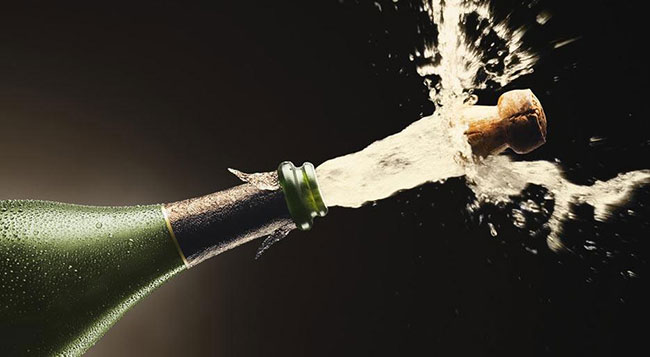KNOW YOUR CHAMPAGNE BOTTLE: SECRETS BEHIND

Want to know why a Champagne bottle is different than any other? Discover how this precious drink is stored and find out how to take out the cork in style As you raise a glass to celebrate Christmas or New Year, you might think the only difference between a bottle of wine and a bottle of champagne is what’s inside the bottle. But you’d be wrong. The champagne bottle is an entirely different vessel. It’s designed specifically to contain the boisterous bubbles within, yet remain elegant in appearance. Quite simply, it’s a feat of precision engineering fit for the drink of kings. Look closely, and you’ll see that the traditional champagne bottle is slightly wider than a wine bottle. Yet champagne bottles must appear to be as refined as the wine inside them. Rather like a Burgundy style bottle, champagne bottles have slender, sloping shoulders leading down from the neck. They also have a dimple in the bottom, known as a punt. The punt adds strength to the bottom of the bottle, but it also aids handling when pouring or when riddling. Riddling is the process by which champagne bottles are turned and agitated, once every two days, in order to send sediments to the neck of the bottle. The champagne bottle is made with thicker and heavier glass to withstand the pressure created by the wine as it carbonates during the second fermentation process. It’s said that a standard 75cl bottle of champagne contains up to three times the pressure of the average car tyre, so the glass must be strong to prevent explosions. Fermentation usually takes place in standard 75cl bottles or 1.5l bottles, called magnums. But there are even larger champagne bottles in the fleet – all with biblical names. At three litres the Jeroboam is the next size up from the magnum, and is named after the first king of Israel. Then there’s the Rehoboam (4.5l), Methuselah (6l), Salmanazar (9l) and Balthazar (12l). Holding 15 litres, or the equivalent of 20 ordinary bottles of champagne, is the Nebuchadnezzar, named after the king of Babylon. Some producers offer even larger bottles, but since the champagne has to be decanted into them from smaller bottles, the quality tends to suffer. When it comes to champagne bottles, at least, size isn’t everything. All that’s left to do is to open your champagne and drink it. But then you’ll notice even the champagne cork is different to an ordinary wine cork. Champagne corks are composites, made from several different types of cork bonded together with glue. Unlike regular wine corks, which are straight, they have a mushroom shape because of the pressure in the bottle. The bottom part is compressed before being inserted into the neck of the bottle, where it expands and presses tightly against the glass. This is so that no gas can escape the bottle and the champagne retains its effervescence. When the cork is removed the lower portion will quickly expand to assume a mushroom shape – the more it expands, the better the cork. The rounded top of the mushroom protrudes from the bottle so that a metal wire clip called an “agrafe” can be twisted around it. This ensures it’s secure. Then the foil is added. Most people open their champagne by removing the foil, twisting the wire loop on the agrafe, removing it and gently coaxing the cork out. The more adventurous choose the “sabrage” method, wherein the entire top of the bottle is removed with a sword or large knife. How is it done? First locate the seam of the bottle, which runs from top to bottom. At the point where the seam meets the lip at the top is the champagne bottle’s weakest point. Then, remove the foil and agrafe, run the sword along the seem, firmly striking the lip of the bottle. The pressure inside the bottle will cause the glass to break cleanly, and the champagne to gush forth. All that precision engineering undone with a single swipe of a blade.
by
Tags:

Leave a Reply